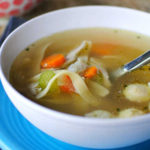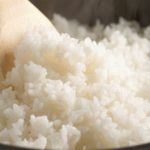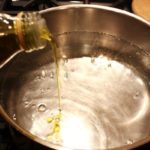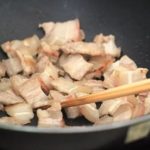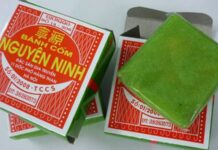Miến is a type of dry noodle, made from sweet potato flour, arrowroot flour, mung bean flour, or cassava flour. The most popular type of miến is made from arrowroot flour because they are chewy, clear, and not sticky when eaten.
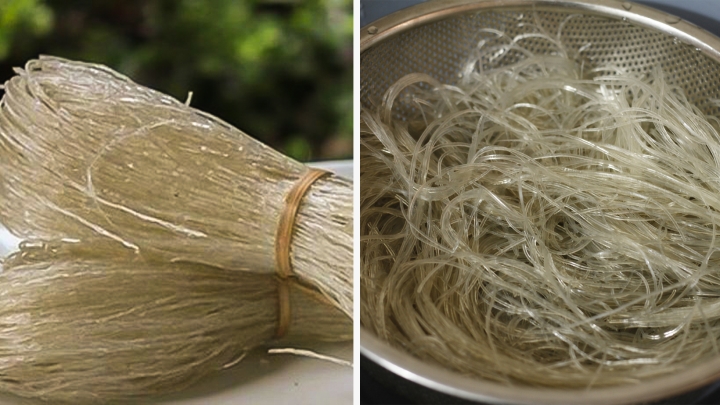
Should miến be soaked in hot or cold water?
Miến is a common ingredient used by Vietnamese people in hundreds of dishes, appearing in many feasts, parties with dishes such as nem, soup, stir-fry, salad… In street food, miến is also processed into many popular dishes such as miến ngan, miến gà (chicken miến), miến cua (crab miến), miến lươn (eel miến), miến trộn (mixed miến)…
Before processing, people often soften the miến by soaking it in water after washing. The question that many people are still confused about is whether to soak it in hot water or cold water to make the dish more successful.
Should miến be soaked in hot or cold water?
If soaked in cold water, you will have to wait a long time for the miến to expand. If soaked in boiling water, the miến will quickly become soft but is easy to break when cooking. Therefore, it is best to soak the miến in warm water. Here are the steps to soak the miến to make your dish crispy and delicious:
– Prepare a large bowl, add enough salt to the bowl, then add about 1 teaspoon of white vinegar.
– Add warm water to the bowl so that the amount of miến to be soaked is completely submerged. Stir well with chopsticks, then add the miến to the prepared warm water and soak for about 5 minutes.
– After soaking, you will see the miến fully expanded, the miến strands are evenly soft, not soft in some places and hard in others. With this soaking method, when processing dishes, whether stir-fried or cooked, the miến strands will be crispy and elastic, not mushy or broken.
Now you know whether to soak miến in hot or cold water, try following these steps the next time you cook to see if the dish tastes better.
Tips for choosing good quality miến
First of all, look at the transparency of the miến strands. The surface of the miến strands must be shiny and slightly translucent, if the miến strands are extremely transparent or very cloudy, you should not buy them.
Good quality miến will not have any distinct smell when you bring it close to your nose, only a mild starchy smell. If it has a strong or no smell at all, you should not buy it.
With normal miến strands, it is easy to break when you bend them with your hand, if it doesn’t break, you should not buy it.
When burning with fire, the miến strands will puff up a lot, without any crackling sound, and you can smell a pleasant aroma. If you don’t see these characteristics, you should not buy it.
We can cook miến to check its quality. Normal miến, after cooking, will be chewy, but if cooked for too long, it will become mushy. Poor quality miến can be very difficult to cook through.
Tips for cooking miến without breaking
For miến soup
To prevent the miến from breaking, you should only blanch the miến when preparing the meal because if the miến is left for too long, it will become mushy and not as tasty.
The blanching time should also not be too long because it will make the miến strands too expanded and flabby.
After blanching the miến, pour hot broth on top of it in a bowl and you can eat it right away.
For stir-fried miến
To prevent the miến from sticking to the pan or forming lumps, you should also pay attention to the blanching step. Soaked miến strands only need to be blanched for about 1 minute in boiling water and then immediately removed. This way, the miến strands will not become soft and sticky when stir-fried.
After blanching, immediately soak the miến in cold water to prevent sticking. When the miến strands are cool, remove them and let them drain. Add a little cooking oil or egg whites to the miến strands to make them stick to the surface of the miến strands when stir-frying, avoiding lumps.
When stir-frying, add the miến strands last after the other ingredients are cooked; stir gently and quickly turn off the heat.
Source: vtc
























